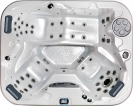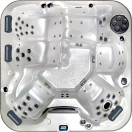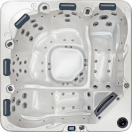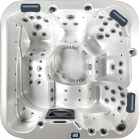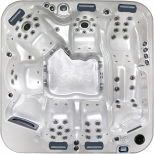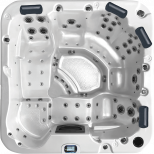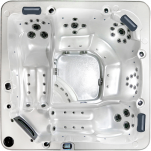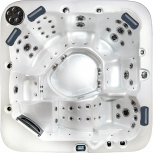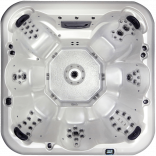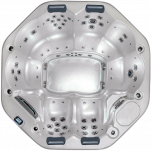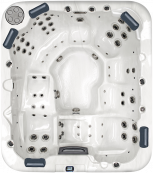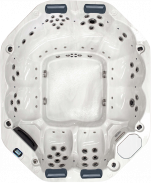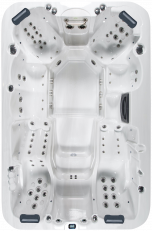All About Headaches: Types, Causes, and Medication Free Solutions
We've all been there before. That splitting headache that comes on suddenly and makes it impossible to focus on anything else. Or the headache that won't go away, no matter what you do. Headaches are a common problem and can be caused by various factors including stress, diet, and lack of exercise. This blog post will discuss the different types of headaches and what causes them. We will also explore some solutions to common headache causes so you can live your best life.
There are many different types of headaches, but the most common are migraine headaches, tension-type headaches, and cluster headaches.
Migraines
Migraine headaches are usually characterised by an intense pulsing or throbbing sensation on one side of the head. They can be accompanied by nausea, vomiting, and sensitivity to light and sound. One of the main defining features of migraine-type headaches is their extended duration.
Tension Headaches
Tension-type headaches are the most common and account for about 90% of all headaches. They can be felt as a dull ache or pressure in any part of the head, but they're most common in the forehead and temples. As their name implies the pain is caused by tightness and tension of the shoulders, neck, and head.
A variety of things can cause tension headaches, however, the most common factors are stress, dehydration, poor posture, bad sleep habit, and eyestrain. In addition, tension headaches can also be caused by substance withdrawal including, but not limited to caffeine.
Cluster Headaches
Cluster headaches are less common than migraine or tension-type headaches. They are called "cluster" headaches" because they tend to happen in groups or "clusters" over days, weeks, or months. They are more common in men than women and usually start between the ages of 20 and 40.
The exact cause of cluster headaches is unknown, but they may be related to changes in the brain's blood vessels and hormone levels, such as serotonin and cortisol. Some possible triggers include alcohol, smoking, stress, lack of sleep, and exposure to bright light or weather changes.
Common Headache Causing Factors
Looking at these common types of headaches, some themes are present in the causal factors. The most common underlying factors in the types of primary headaches are:
Stress
Either acute stress or chronic stress can cause headaches. While stress is most readily associated with tension headaches, stress also affects sleep, diet, and most notably hormones and brain chemistry.
Diet
Diet can affect headaches in different ways for different people. Some common triggers for headache pain include dehydration, hunger, and certain foods or drinks. Substances such as caffeine or alcohol, processed foods, and foods that contain additives such as MSG or preservatives have also been linked to headaches, particularly migraines.
Lack of Exercise
There is much anecdotal evidence that lack of exercise can lead to increased headaches, and scientific evidence supports it. For example, studies have found that people who exercised regularly were less likely to suffer from migraines than sedentary people. It is also known that exercise can release hormones such as endorphin and decrease cortisol levels.

Natural Ways to Reduce Headaches
There are many ways to treat and prevent headaches. There are multiple medications available for headaches from common over-the-counter options like ibuprofen to steroidal and narcotic compounds that can be prescribed by a doctor. Medications only treat the symptom, which means in the future you will just more headaches; and they may get worse with time. Aside from being non-permanent solutions, all medications have side effects, even paracetamol and ibuprofen can cause long-term liver damage.
The best solutions in life are the natural ones, our bodies are already equipped to look after themselves, and we need to give them an environment that allows this. The great thing is that natural solutions are some of the best ways to target the underlying cause, instead of the symptom and they will improve your life in other ways too!
Eating Healthier
Improving your diet is a great place to start when addressing headaches, you don't need to start with anything crazy or follow any trends. The easiest place to start is being mindful of what you are eating. If you eat a lot of takeaway consider changing to a chain that provides healthier options and cut out one takeaway meal each week.
If you cook at home often, be mindful of the ingredients you purchase. Compare the brands of products and check for sugar, sodium, preservatives, and other additives; choose options with fewer of these ingredients. Finding organic alternatives to your current staples is also beneficial, from fruit and veg to meat and canned goods; organic foods are almost always better.
Managing Stress
Unfortunately, stress is a fact of life, so removing it entirely is not plausible. Start by reducing unnecessary stress, if you catch yourself saying yes to people or events that cause stress, learn to say no. Disconnect from technology, particularly in the hour before bed, and turn off the tv sometimes, the constant 24/7 news cycle is a veritable cortisol-generating machine.
Once as many causes of stress as possible are reduced, then look at managing what is left. Massages, yoga, or taking time out to relax is important to reduce stress. Hydrotherapy is an excellent option that provides the benefits of massage and general stress relief. In recent years advancements in spa, technology has led to an increasingly wide range of high-quality spas that provide professional quality hydrotherapy experiences. You don’t need to compromise between a spa and massage either as many spas include neck and shoulder massagers for a full-body stress management experience!
Exercising
Exercising has many benefits, regular exercise is known to improve your mood and your overall health. Exercising also releases endorphins, increases blood flow and oxygen absorption, and reduces stress levels. For headache reduction, the best exercise is aerobic activity, it improves your breathing while increasing your heart rate.
While any aerobic activity will be a great help, the best aerobic exercise is swimming, it forces you to control your breathing and gives you a total body workout. Plus, complete submersion in water is also proven to reduce stress in the body.
In past times swimming was a tedious endeavour, involving traveling to and from a pool. However, modern swim spas can provide at-home swimming opportunities that are viable even for professional swimmers. Many swim spas also include hydrotherapy chairs and recovery jets, so you can have the best of both worlds, exercise, and stress reduction!
Conclusion
What do you have to lose, the solutions are simple and the benefits are many. The worst that will happen by following these steps is you will become happier, healthier, and have more energy to live the life you love! A great way to reduce and manage stress, and get exercise is to have your own spa at home. Sapphire Spas have a great range of spa pools and swim spas to choose from.
For a fascinating exploration of our deep connection with water and how we can harness its power for our wellbeing, check out our blog post titled "Applying the Hidden Messages in Water".


